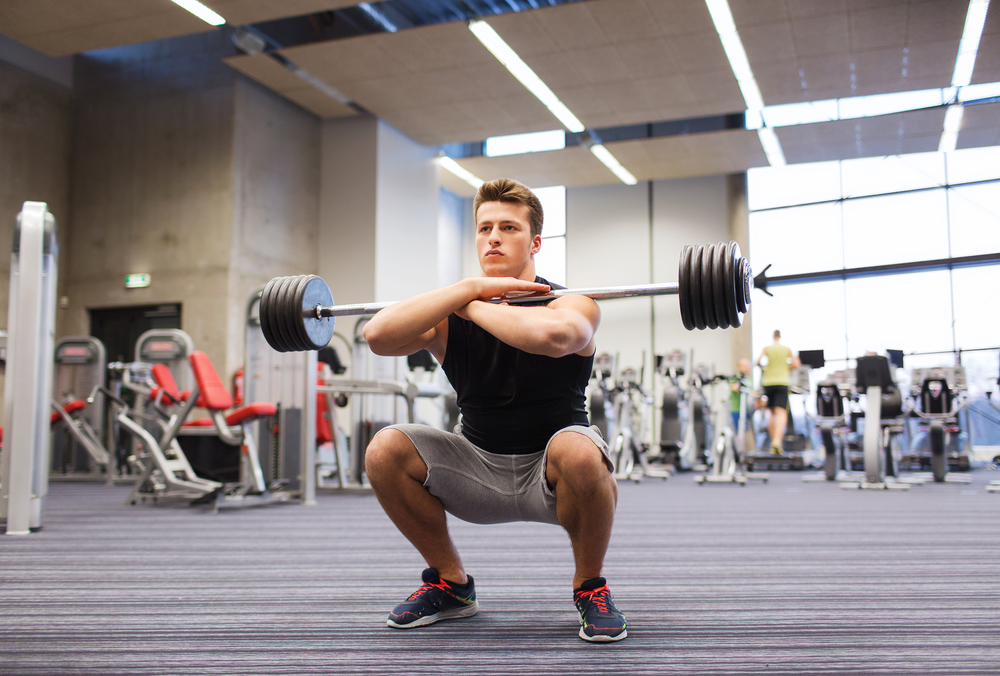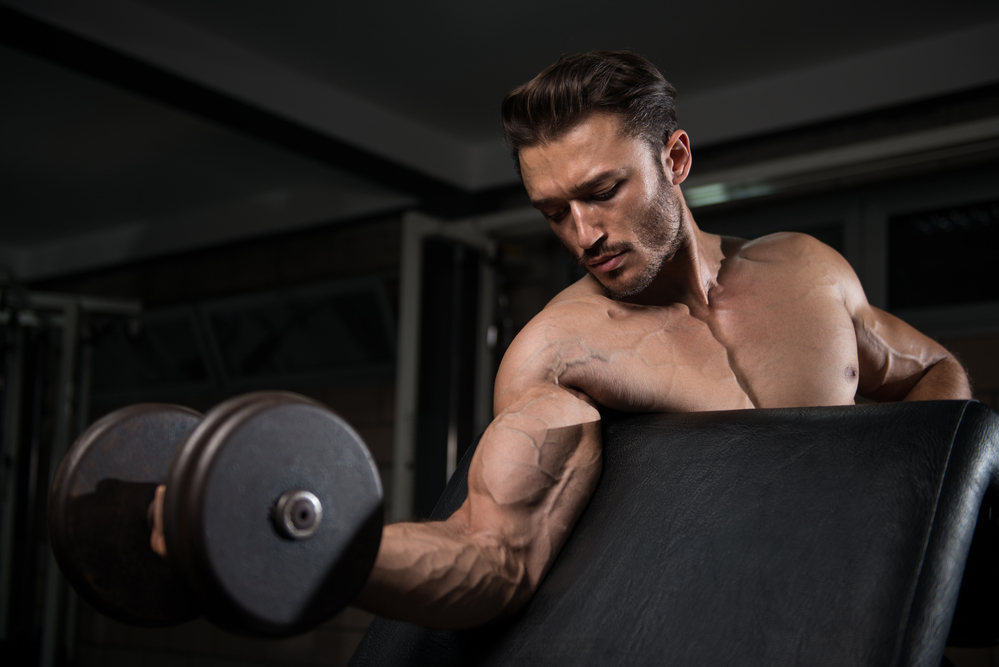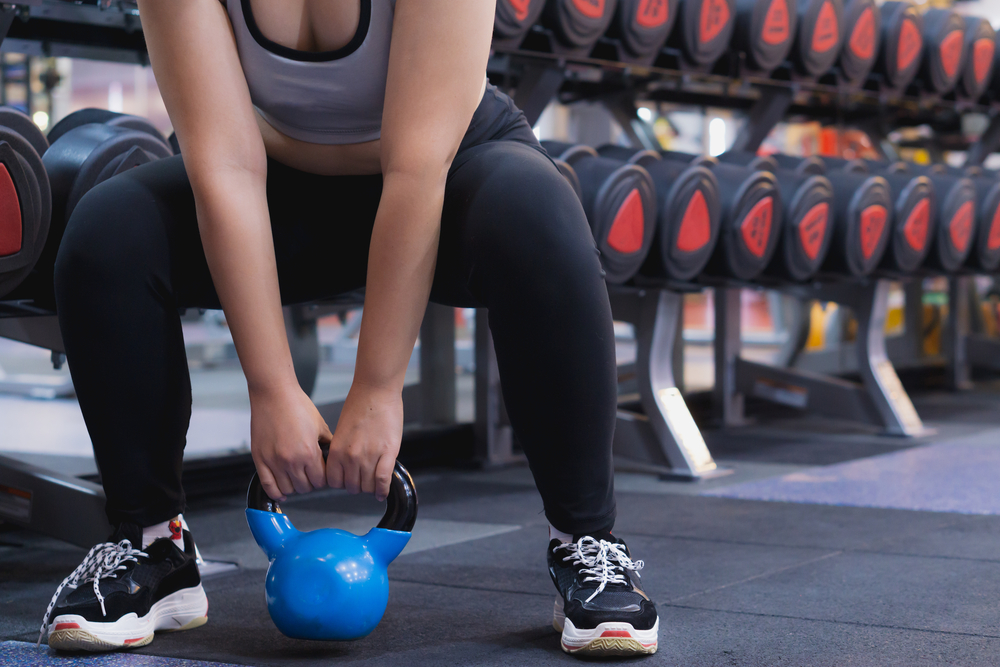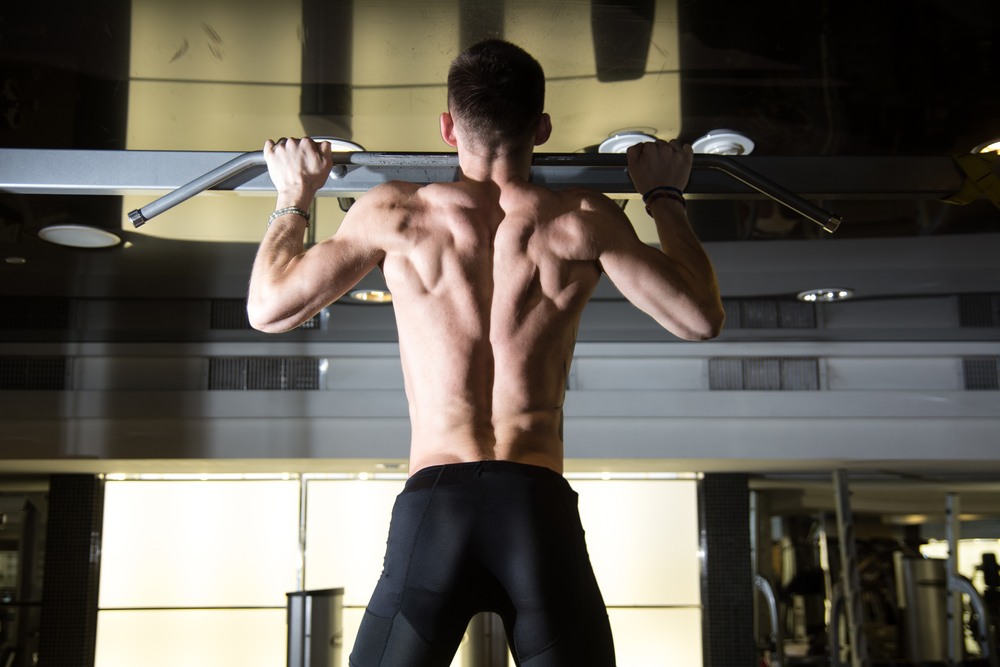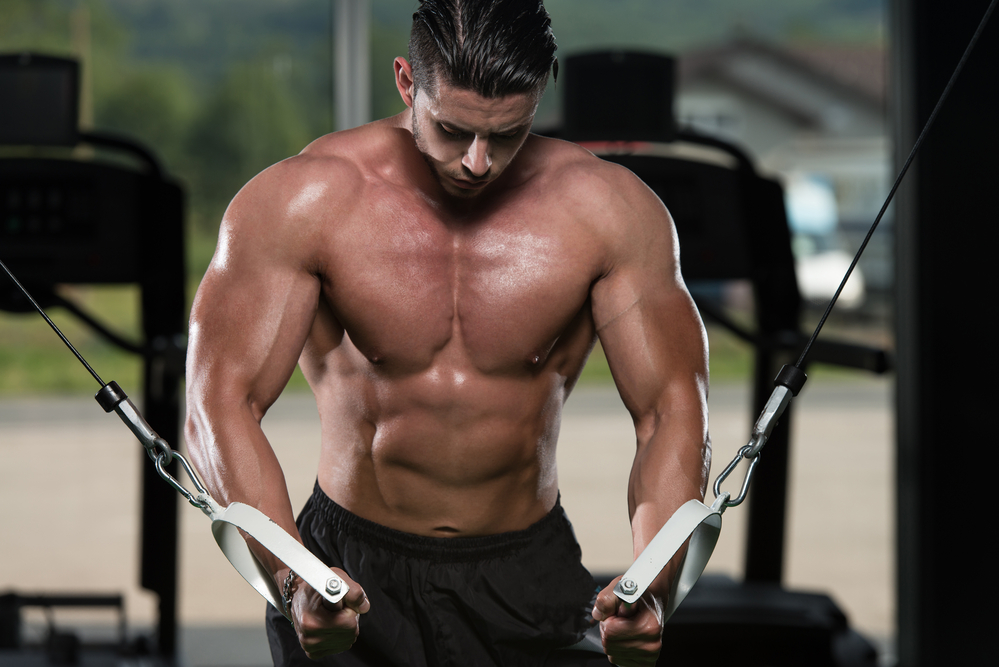
Table of Contents
Сable crossover is an exercise performed in a cable exercise machine. It’s an isolated exercise, which shapes the pectoral muscles. Athletes who already have a baseline pectoral mass that needs to be polished use it often.
What muscles is the exercise targeting?
The exercise targets the pectoral muscles. Depending on its variation, it’s possible to accentuate the load on the lower, upper or inner part.
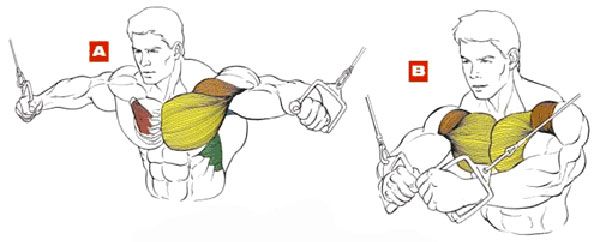
The pectoral muscles are the target muscles for the exercise
The muscles of the shoulders, arms, and back are used as additional muscles. Several muscles in the body have a stabilizing function. In particular, these are the muscles of the press, legs, and buttocks.
The crossover advantages
Exercise in a cable exercise machine has its own specifics. Its main advantages are as follows:
The pectoral muscles are constantly working. The resistance of the blocks does not allow them to relax. When performing the exercise with dumbbells or a barbell, the applied force is rather impulsive in nature
By varying the position of the body and movement of the arms, you can work out different areas of the pectoral muscles. For example, if we cross-over from top to bottom, the lower part of the chest works. If, on the contrary, we pull up the handles of the lower blocks, the emphasis is on the upper chest. By doing the crossover in front of us, we are working on the center
The crossover technique involves stretching the target muscles at the top. Such a technique allows you to increase the range of motion and force the muscle to contract as much as possible
Since the exercise does not involve heavyweights, it’s significantly safer for the shoulder joints than, say, a bench press
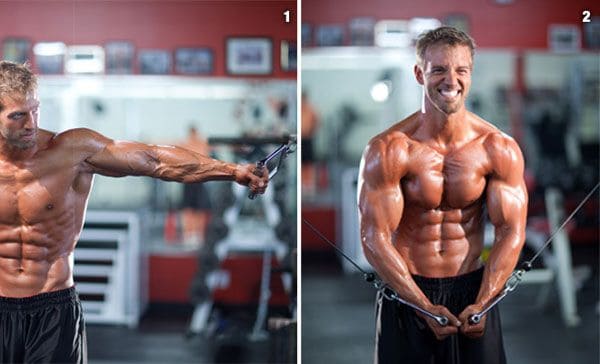
Exercise technique
The technique often plays a very important role in isolated exercises. Сable cross-over is no exception. Our task is not to load the muscle as much as possible, but to make it work so that it grows in the way we need it. In the case of using a strengthening exercise, we work with an already tired muscle, so heavyweights are also irrelevant.
Let’s consider cable cross-over in its classic form.
Set the required weight. It should be the same on the right and left. Use a load that will allow you to perform the movements in full control, without jerking
Stand between the uprights, lean forward slightly with your back straight. Place your feet shoulder-width apart, and bend your knees slightly. Some athletes put one leg forward to stabilize their body position. Such an approach is correct, however, it’s necessary to alternate the position of the legs to balance the load on the right and left sides
Raise your arms and grasp the handles, you must feel the stretch in the pectoral muscles. At the same time, the elbows should be bent, the shoulder blades should be tightly pressed to the back
As you exhale, without bending your back and without changing the angle at the elbows, slowly bring your hands down in front of you. The inner sides of the wrists should be facing each other. Concentrate on maximizing your chest muscles. At the bottom of the exercise, linger for 1-2 seconds. You can even wrap one hand behind the other a little to increase the amplitude
As you inhale, raise your arms again to the starting position
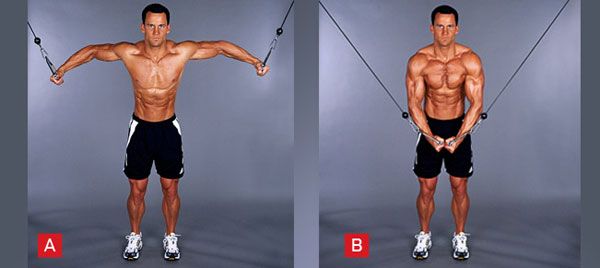
The classic crossover version emphasizes the load on the lower chest
Do not straighten your elbows during the exercise. The angle should be about 10 degrees. With the right technique, the trajectory resembles a semicircle. At the same time, the back should remain straight. The shoulders should be straightened.
It’s also important to control your strength and not allow yourself to only work with your hands. We train the pectoral muscles. Avoid jerking. The movement should be even so that the muscles do not relax.
Top and mid-chest options
As I said, classic cross-overs mostly work on the lower chest. It is worth citing variations of the exercise, the combination of which will help to maximize the shape of the pectoral muscles from all sides.
In general, the technique remains the same, only the position of the body and the direction of the cable traction change.
Upper pectoral muscles
When our task is to work out the upper contour of the chest, you need to pull the handles not from top to bottom, but from bottom to top. The exercise is performed on the lower block.
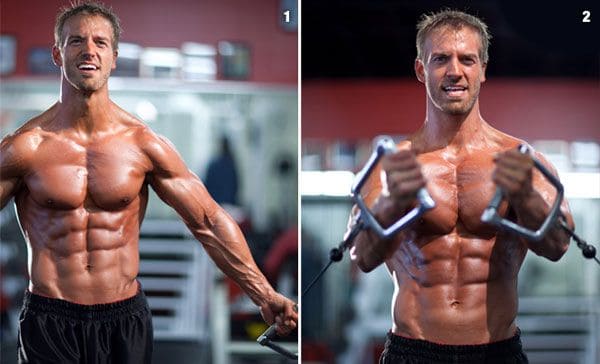
The load is redistributed to the upper pectoral muscles when using the lower blocks
Bend your arms slightly. Then lower them on the sides of the body and pull them back slightly (until you feel a stretch in your chest). The palms are directed towards the body. As you exhale, your hands need to be raised and brought in front of you. While inhaling, return to the starting position.
Mid pectoral muscles
To work the middle of the chest, secure the blocks in the middle of the supports and do the exercise straight in front of you. With this position, the arms at the endpoint must be forward.
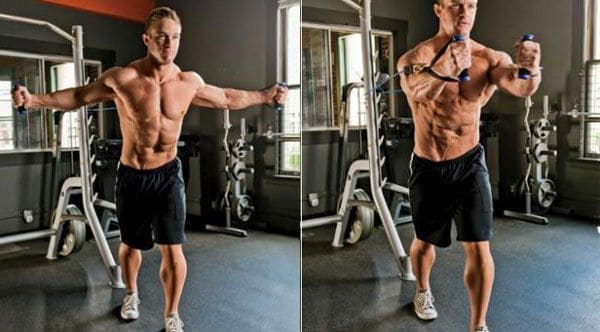
Working out the central part of the chest
You can also try a horizontal crossover. Place a bench between the supports of the cable machine, lie on it with your body and take the handles of the blocks in the lower position. The load is similar to what you get when doing the dumbbell exercise. However, thanks to the resistance of the cable machine, your muscles won’t relax for a second making the workout even more effective.
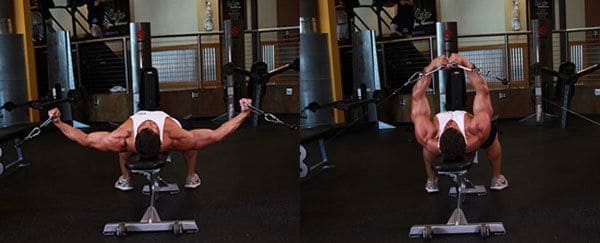
Exercise on a horizontal bench
How to build a training
You can include cable crossover into your program after heavier basic exercises. They should be performed for 10-15 reps of 2-3 sets with light or medium weight. The technique of movement is of primary importance.
Try to combine cable crossover with push-ups, doing both exercises on the set without interruption. For example, do 20-30 push-ups, then immediately 10-15 crossovers.



